Preview of UFC Undisputed 2010
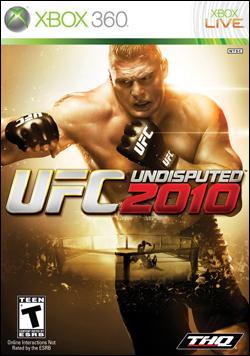
UFC Undisputed 2010
by Adam DilevaMay 4, 2010
With yearly sports games, we have come accustomed to each revision to have a new feature or two and some slightly better graphics; this is clearly not the case with UFC Undisputed 2010. UFC 2010 is not following suit like most other sports game with its first sequel due out very shortly.
It may have only been a year since UFC 2009 arrived but THQ has been very hard at work and has clearly heard what the community wanted included for the next iteration of the ultra popular series. I was totally expecting a simple roster upgrade, some slightly better graphics and maybe a new feature or two but THQ has gone so far beyond my expectations that UFC 2010 feels like a completely new game (which is a great thing!). Considering how much has been improved and even remade from the ground up, there is so much to go into detail with about all the new features that I'm going to stay more focused on the new main mechanics and the vastly improved career mode; thus leaving the rest of the features will be more in detail when the final review comes out last this month.

So let's get onto what's new at the core of UFC 2010. The biggest chance you'll notice right away with the striking is that there is now a sway system in place that allows for a whole new dimension of defensive maneuvering and a new counter-striking system that can end fight extremely quickly if done correctly. If you've played the Fight Night series, it feels somewhat like that in how you can duck, bob, and weave to avoid attacks then counter attack much like Anderson Silva did against Forrest Griffin.
Combos in 2009 were a string of preset button commands and didn't really allow for much of an exciting striking game which is why most people got in a hit or two, then backed away and jousted to repeat it. Now in 2010 the combo system is much more varied a swing in momentum can almost instantly change the outcome of a fight.
Ground game and grappling was the most difficult part for most players in 2009 and THQ has improved this greatly so that ground and clinch game is the same controls and mechanics rather than their own separate entities. This makes it less confusing and not as much thinking has to go into what you want to do or trying to remember specific controls for each specific situation. I was actually able to hold my own on the ground now and I wasn't that strong of a ground game player in 2009.
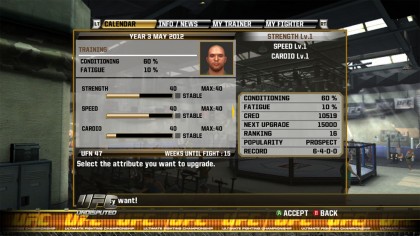
While UFC 2009 was a great inaugural title in the series, there was much missing from it to make it a more believable MMA game; one of t biggest being the use of the cage in the standing clinch. Now in 2010 the cage can be used just like in real fights to pin your opponent against for superior offensive control or even to get yourself out of a bad situation by cage walking in you are on the bottom. It's situational depending on how the fighters are positioned on or near the cage, but just like in a real fight, you'll want to be using the cage to put them in a disadvantageous position.
Posturing has even undergone a redesign and every position in the game now has an Up and Down postured variant that will greatly affect your fighter's offence or defense. If you are on the mount on down postured, it's very difficult for the fighter on the bottom to transition out because you are able to control their movement for a trade off of offensive power. Just the opposite applies as well, you can posture up to try and finish the fight with power blows but this leaves the other fighter open to try and transition out since you aren't controlling their body as proficiently.
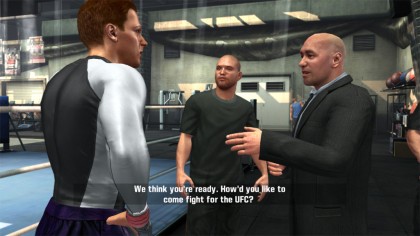
The other major core mechanic that's undergone a vast upgrade is the submission system. In 2009 if was a very static system that essentially just showed you the animation of it being completed or not. Now in 2010 it's a much more player based ‘analog' based system where you will actually see a struggle in trying to finish or defend a submission. What this means is that when you see a player trying to defend a submission, the more they rotate the stick to block or reverse it, the more you'll actually see them struggle and try and get out of the move in real time; no more just watching a ‘win' or ‘lose' animation.
In 2009, it was difficult to make your fighter's clothing and tattoo's look exactly how you wanted because there were only preset sizes and places you could place them on your body or shorts. Now in 2010, you are able to simply drag and drop any brand on your shorts anywhere and even tattoos can be moved and sized to almost anywhere you want very simply.
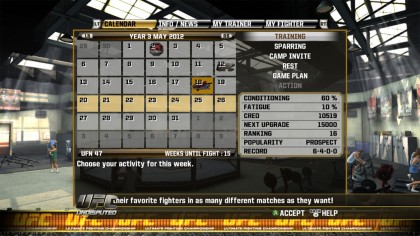
When you used to play with your created fighter in 2009, there was only 10 different options for your nickname to be called in your fights; now in 2010 there are 50 but what's really great is the inclusion of first and last names as well. So now you can pick your first and last name from a list of 100 for each on top of your nickname as well. Rogan, Goldberg, and even Bruce Buffer will even voice them throughout your intros and match.
To go along with this, you are also able to choose your own fighters voice from a set of 5 different options. This will be used in the new cutscenes and post fight interviews mostly but adds a nice little touch to the presentation of the whole thing and gives your fighter some life.
When you go to create your new fighter you will also now have the option to pick their stance and even which hand is their power hand. Stances vary from Southpaw, Switch Stance, and Orthodox and whatever main hand you choose will be the one that does more damage when striking your opponent.
When you created your fighter in 2009 you had to choose one striking base like boxing and one grapping technique such as wrestling; this limiting mechanic has been completely redone and you are no longer set down a predetermined path of what skills you can learn. There are some new techniques such as Karate, Sambo, and Greco-Roman Wrestling but what's so great about this rework is that you will basically be able to learn any move from any set you wish during your career. This will allow you to make a completely custom character with the exact move list you want or only use.
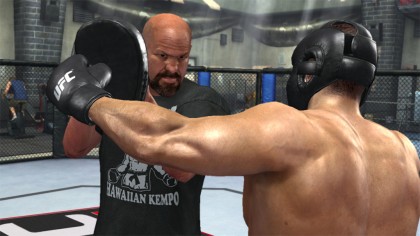
So now that you've made your new fighter, let's delve into how the whole new career mode will work. For starters, this year's career mode has been boosted to 12 years which is up from last years 7; this will basically give you almost twice as many fights throughout your career. With an aging system in place, this also means that you are going to have to maintain your stats as time goes on meaning if you don't use it, you lose it just like in real life. It definitely adds some more maintenance to your characters progression but also makes it so you have to always be paying attention to what stats you're neglecting over time.
This year your fighter is going to have to work for their chance to get into the UFC as they will start off as an amateur which is somewhat like the games tutorial mode; here you can test the different difficulty levels (as you can no longer switch once you've made your choice) before turning pro. Once you do turn pro you get a chance to fight in the World Fighting Alliance (WFA) and this is like a stepping stone for your character and gives you time to learn how the career mode and menus work before stepping into a grueling UFC schedule. Win a few fights and Dana will come knocking asking you if you want a shot in the UFC. Once you accept you'll start out on the undercards like everyone else and have to work your way up the cards to the PPV's and hopefully a title shot eventually.
Once you've worked your way to the top and simply dominated all the competition, you are now going to be able to switch weight divisions to give yourself some new challenge and take on some other big name fighters. You'll get the opportunity to do this twice incase you don't want to switch the first time and definitely adds some refreshment once you've completely decimated the competition in your first weight class.

Popularity is given by winning fights and the more popularity you have the quicker you can unlock new sponsors; you no longer have to wait till very far in your career to earn the unlocks for the top brands like you did in 2009. Decide to wear that sponsor for a long time and with your ‘commitment' you will also unlock new items from that sponsor as well.
Something completely new in 2010 is the ability to do interviews and affect relationships with other fighters. You'll be able to do pre-fight interviews with Rachelle Leah and even post-fights with Joe Rogan in the ring after winning; you'll even be deciding if you want type of comment you'd like to make ranging from respectful, disrespectful, general, or even play to the fans. Depending on what choices you make you'll gain or lose popularity along with other factors as well. Even at weigh-ins you'll be able to choose which type of gesture to do at the stare down and ultimately affect the relationship between you and that fighter. Disrespect someone long enough and you'll have a rival on your hands.
Camp invites are back but of course vastly improved; in 2009 you had to sign up to join a camp then wait for that specific week to join them, now you can join any camp at any week during your career just like all the other weekly options you are given. You select where you want to train and each camp has over 40 different moves you are able to learn and this is how you go about piecing together your fighter's ultimate move set. Some moves are only available at specific camps as well so sometimes you'll have to broaden where you train to learn certain moves you wish to attain. Train enough with a specific camp though and you'll also gain the right to use their camp logo on your clothing.
There are even more career improvements such as auto sparring (take a fraction of the progression points for instant automated sparring) and choosing a gameplan (which will allow you to boost your stats for your next fight depending on how you want to approach the fight).
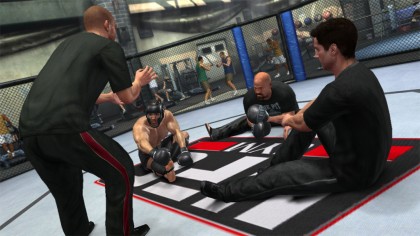
The last improvement I'll mention (as I want to save some for the final review) that I found very interesting is the ‘Game is Watching You' mechanic. What this system basically does is watch all of your fights and learns how you like to finish them. For example, you start to knock out everyone with a head kick early on and the game is going to know that this is your preferred tactic and your next opponent might try to take you to the ground more since they know you are stronger with your striking. This forces you to become a better well rounded fighter in career mode and you and no longer be a one-trick pony as that doesn't work in the real UFC for very long.
There are so many new features and improvements that I could really only touch on the new mechanics, Create a Fighter, and Career mode for this preview. There are even more really awesome features that I'll delve into in the final review but I hope you get a sense for how much bigger and better UFC Undisputed 2010 is this year. I wish all sports games would take note from THQ and improve everything across the board this much with their yearly iterations. Hopefully by now you've played the demo to really get a sense of how improved this year's version is over 2009 and I'm excited to share with what else is new with Undisputed 2010 when it ships last this month.














